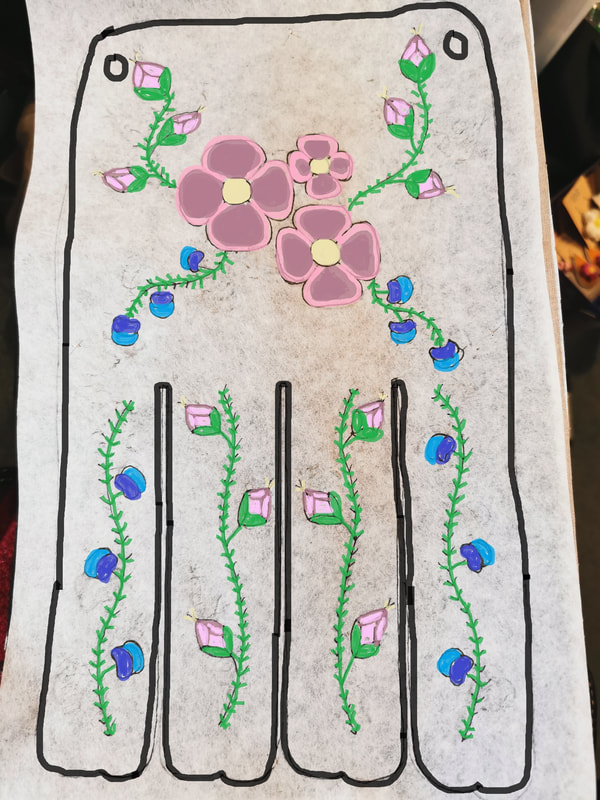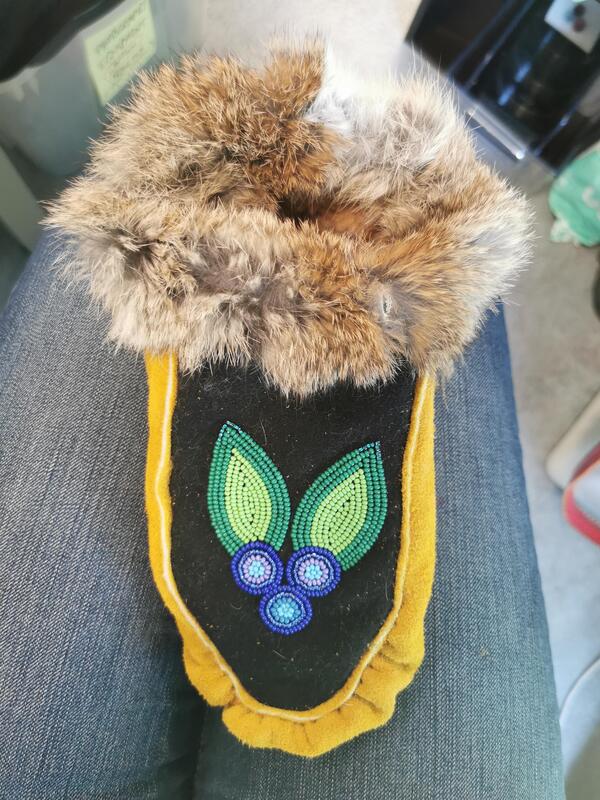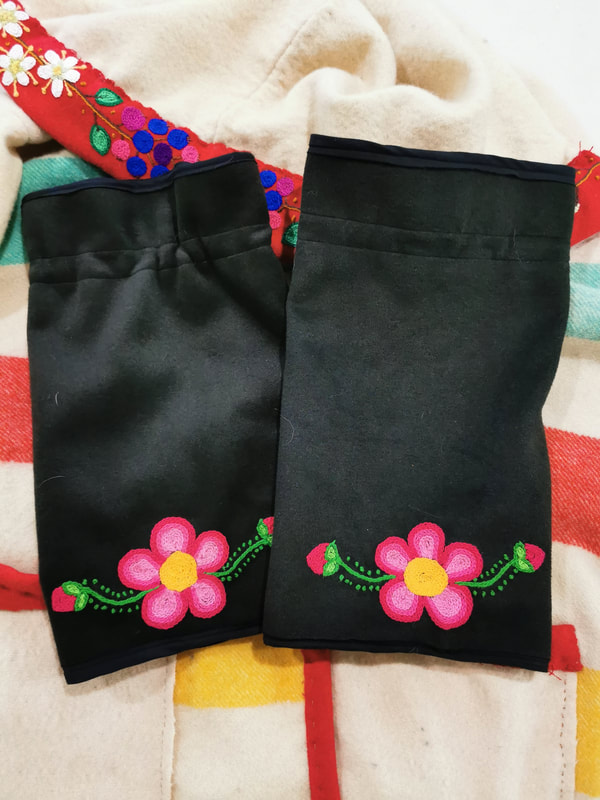Métis Culture and History
Métis Residential School Experience - take a look at our brochure here, or stop by the office to pick up a physical copy. If you are needing any support, check out the resources available in the brochure or speak with our Métis Patient Navigator.
IHIP - Indigenous Health Initiative Program These brochures were created for this past program. Take a look at the brochures. Maarsii!
Bowling
Geocaching
Golfing
Harvesting
Jigging
Swimming
Bowling
Geocaching
Golfing
Harvesting
Jigging
Swimming
Métis Material Culture (more coming soon!):
Beadwork
Dog Sleds and Tuppies
Cradleboards and Moss Bags
Capote
Embroidery
Fire Bag
Fish Scale Art
Leggings/Mitasses
Mittens
Moccasins
Ribbon Skirt
Sash
Tufting
Quillwork
Shawls
Beadwork
Dog Sleds and Tuppies
Cradleboards and Moss Bags
Capote
Embroidery
Fire Bag
Fish Scale Art
Leggings/Mitasses
Mittens
Moccasins
Ribbon Skirt
Sash
Tufting
Quillwork
Shawls
Loom Beading Resources:
Here is a easy to follow video on setting up your beading loom - Foundations: Setting Up A Beading Loom - YouTube
Once your bead loom is loaded, you can learn how to bead on your loom here!
Here is a easy to follow video on setting up your beading loom - Foundations: Setting Up A Beading Loom - YouTube
Once your bead loom is loaded, you can learn how to bead on your loom here!
NIMA Michif Lessons (Zoom sessions from 2021)
NIMA Michif Language Lesson 1 - YouTube
NIMA Michif Language Lesson 2 - YouTube
NIMA Michif Language Lesson 3 - YouTube
NIMA Michif Language Lesson 4 - YouTube
NIMA Michif Language Lesson 5 - YouTube
NIMA Michif Language Lesson 6 - YouTube
NIMA Michif Language Lesson 7 - YouTube
NIMA Michif Language Lesson 8 - YouTube
NIMA Michif Language Lesson 9 - YouTube
NIMA Michif Language Lesson 1 - YouTube
NIMA Michif Language Lesson 2 - YouTube
NIMA Michif Language Lesson 3 - YouTube
NIMA Michif Language Lesson 4 - YouTube
NIMA Michif Language Lesson 5 - YouTube
NIMA Michif Language Lesson 6 - YouTube
NIMA Michif Language Lesson 7 - YouTube
NIMA Michif Language Lesson 8 - YouTube
NIMA Michif Language Lesson 9 - YouTube
NIMA Cultural Artform Teachings (YouTube Videos):
Embroidery
Fish Scale Art
Flat Stitch Beading
Intro to Tufting
Quill Plating
Picot Stitch
Fire Bag Assembly
Embroidery
Fish Scale Art
Flat Stitch Beading
Intro to Tufting
Quill Plating
Picot Stitch
Fire Bag Assembly
History of the Métis Canoe
The first water vessel used by the Métis voyageurs were birch bark canoes. These were made by carefully removing the bark from Birch trees and wrapping it around a willow branch frame. Spruce roots were used to tie the canoe pieces together and resin made from spruce sap and animal tallow was used to waterproof the hull. The sap and tallow mixture would be applied daily to keep the canoe waterproof. Both men and women would work together to gather the materials needed to build a birch bark canoe. It would take two men two weeks to complete the construction of a voyageurs canoe. These canoes would hold 8-10 men, as well as their provisions for the trip and 5000lbs of trade goods. The canoe itself would weigh around 600lbs and would require four men to carry it. The Métis used smaller canoes in their day-to-day lives that would be used for hunting, trapping, fishing and harvesting wild rice.
Journeys were dangerous, as the birch bark canoe could not withstand crashing into rocks, stumps or the ground with too much force. The canoes were not very stable and required men to sit still while paddling. This meant they had to be fast at steering and maneuvering the 36-foot canoe when obstacles would appear out of the waves. The canoes could be repaired on the go, provided it wasn’t any major damage. Most voyageurs did not know how to swim, which unfortunately led to many men not making it back home.
Voyageurs would paddle for around sixteen hours a day, stopping every hour or so for a pipe break. Their trade route could take up to 90 days and they would paddle roughly 50km a day. Songs would be sung to help keep their spirits up and to help paddle in synchrony. Canoes would have to be portaged over land and swamp to connect to the next waterway. This would require carrying all their goods and canoe across land, sometimes up mountainsides. Voyageurs had to be able to carry at least two 90lb bundles at a time, one man was known to be able to carry seven!
When the days paddling was over, the canoe would be turned on its side to offer shelter for the men while they slept. Furs or moss would be laid down to create a bedding and a tarp could be used in bad weather to offer more protection. The men would spend their evenings telling stories and singing songs by the fire, until it was time for bed. The next day would begin at 3:00am!
Eventually, the birch bark canoes were replaced by York Boats. They were invented between 1826-1835 and quickly became the more favorable option as they could carry significantly more weight, while still only requiring a crew of 8-10 people. The York boat was rowed, as opposed to paddled like the canoe, and had a mast and sail to make the journey easier. However, portaging a York boat over land, mountain and swamp was a much more difficult feat.
York Boats were constructed using local wood and iron that was imported. The boats were long, with flat bottoms and a stern that came up at a 45-degree angle. This made it ideal for travelling in the winter when the waterways would freeze, as it could cut through the ice. The first York Boats were around thirteen meters long, but as trading exploded they began to make three different sizes of boats – the largest of which could hold 120 bundles of trade goods. York boats became the main method of transporting trade items for over 100 years.
Journeys were dangerous, as the birch bark canoe could not withstand crashing into rocks, stumps or the ground with too much force. The canoes were not very stable and required men to sit still while paddling. This meant they had to be fast at steering and maneuvering the 36-foot canoe when obstacles would appear out of the waves. The canoes could be repaired on the go, provided it wasn’t any major damage. Most voyageurs did not know how to swim, which unfortunately led to many men not making it back home.
Voyageurs would paddle for around sixteen hours a day, stopping every hour or so for a pipe break. Their trade route could take up to 90 days and they would paddle roughly 50km a day. Songs would be sung to help keep their spirits up and to help paddle in synchrony. Canoes would have to be portaged over land and swamp to connect to the next waterway. This would require carrying all their goods and canoe across land, sometimes up mountainsides. Voyageurs had to be able to carry at least two 90lb bundles at a time, one man was known to be able to carry seven!
When the days paddling was over, the canoe would be turned on its side to offer shelter for the men while they slept. Furs or moss would be laid down to create a bedding and a tarp could be used in bad weather to offer more protection. The men would spend their evenings telling stories and singing songs by the fire, until it was time for bed. The next day would begin at 3:00am!
Eventually, the birch bark canoes were replaced by York Boats. They were invented between 1826-1835 and quickly became the more favorable option as they could carry significantly more weight, while still only requiring a crew of 8-10 people. The York boat was rowed, as opposed to paddled like the canoe, and had a mast and sail to make the journey easier. However, portaging a York boat over land, mountain and swamp was a much more difficult feat.
York Boats were constructed using local wood and iron that was imported. The boats were long, with flat bottoms and a stern that came up at a 45-degree angle. This made it ideal for travelling in the winter when the waterways would freeze, as it could cut through the ice. The first York Boats were around thirteen meters long, but as trading exploded they began to make three different sizes of boats – the largest of which could hold 120 bundles of trade goods. York boats became the main method of transporting trade items for over 100 years.



